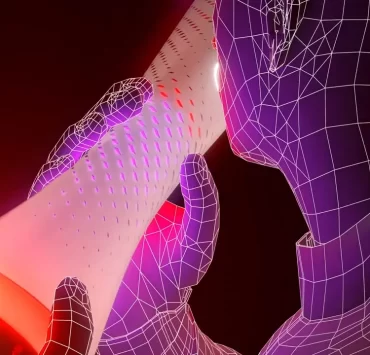
In recent years, the second Monday of October has seen a shift in focus from Columbus Day to Indigenous Peoples’ Day, a holiday that acknowledges and celebrates the diverse cultures, traditions, and contributions of the native peoples of the Americas. This movement represents a significant step towards recognizing the historical injustices inflicted upon Indigenous communities and promoting a more inclusive and respectful narrative.
Let’s look into the origin of Indigenous Peoples’ Day, its significance, and the ongoing efforts to promote awareness and understanding of Indigenous cultures.
Check out our latest Web Stories.
The Origins of Indigenous Peoples’ Day
The roots of Indigenous Peoples’ Day can be traced back to the 1970s when Indigenous activists and leaders began advocating for a day that would counter the celebration of Columbus Day.
Columbus Day, which commemorated Christopher Columbus’s arrival in the Americas in 1492, has long been criticized for glossing over the brutal treatment of Indigenous peoples, colonization, and the tragic consequences of European exploration.
You May Like To Read: 6 Delicious Alternatives For Junk Food

South Dakota was the first state to officially replace Columbus Day with Native American Day in 1989, sparking a broader movement. Berkeley, California, followed suit in 1992, declaring the second Monday in October as Indigenous Peoples’ Day. Over the years, more cities and states across the United States have embraced this alternative holiday, aiming to acknowledge the resilience and cultural heritage of Indigenous communities.
Related posts:
- Three Banned Books That You Must Read
- Mother’s Day Gift Options
- How to Throw a Great Office Party
- Personalizing Your Marketing Strategy and Boosting Your Brand
- 1win Betting Site for India – Review On How to Register, Verificate, Get Bonus And Much More
- Putin Signs Legislation Banning Gender Reassignment
Significance of Indigenous Peoples’ Day
- Honoring Native Cultures: Indigenous Peoples’ Day serves as a platform to celebrate the rich and diverse cultures of Native American, Alaskan Native, and Indigenous peoples from across the Americas. These cultures have a profound history, unique traditions, and a wealth of knowledge that enriches the tapestry of humanity.
- Acknowledging Historical Injustices: The holiday provides an opportunity to reflect on the history of colonization and the often devastating impacts on Indigenous communities. By acknowledging these injustices, we can work towards a more inclusive and equitable society.
- Promoting Education: Indigenous Peoples’ Day encourages educational institutions to incorporate Indigenous history and perspectives into their curricula. This helps dispel misconceptions and fosters a deeper understanding of the contributions and challenges faced by Indigenous peoples.
- Supporting Indigenous Communities: Many Indigenous communities continue to face social, economic, and health disparities. Indigenous Peoples’ Day is a reminder to support initiatives that address these disparities and empower Indigenous individuals and communities.
- Fostering Cultural Exchange: The celebration of Indigenous Peoples’ Day can serve as a catalyst for cultural exchange and collaboration between Indigenous and non-Indigenous communities. This helps build bridges of understanding and appreciation.
You May Want To Know: Animals That Drink Blood
-
How to Switch Car Insurance Companies Without a Hassle

Switching your car insurance provider may seem difficult, but with proper preparation, it can be easily accomplished. Nevertheless, the abundance of available policies can add a layer of complexity to the process. Changing your car insurance company can stem from various reasons, including seeking optimal coverage, saving money, or accessing better customer service. Follow these…
-
Spinning a Yarn of Fun: The Pin Up Betting Platform Ultimate Review



Indulge in a detailed review crafted especially for Indian users, unravelling the vibrant tapestry of Pin Up’s sports betting and casino scene. Discover insider tips on maximizing your fun (and potential winnings!) and become well-versed in navigating the ins and outs of this thrilling online gambling haven.
-
Secrets of Creating Ultimate Man’s Cave



Secrets of creating the ultimate man’s cave. What is man’s cave, and what are its history, varieties, and critical features? Secrets of creating the ideal space for men of different ages. Valuable recommendations for designing and arranging a man’s cave.


Ongoing Efforts and Challenges
While the adoption of Indigenous Peoples’ Day is a significant step towards recognizing Indigenous cultures, there is still work to be done. Many states and communities have yet to officially recognize the holiday, and some continue to resist the change. Additionally, the preservation of Indigenous languages, lands, and traditions remains an ongoing challenge.
Efforts to raise awareness about Indigenous issues, support Indigenous businesses, and advocate for Indigenous rights are crucial components of the ongoing movement. Furthermore, the establishment of a National Indigenous Peoples’ Day in the United States and similar celebrations in other countries could further solidify the importance of this holiday.
Our Take
Indigenous Peoples’ Day represents a growing global movement to honor and uplift Indigenous cultures and histories while acknowledging the injustices they have faced throughout history. By recognizing the significance of this holiday, promoting education, and supporting Indigenous communities, we can collectively work towards a more inclusive and equitable future where the voices and contributions of Indigenous peoples are celebrated and respected. Indigenous Peoples’ Day is not just a holiday; it is a call to action to ensure a brighter, more harmonious future for all.
Related posts:
- Three Banned Books That You Must Read
- Mother’s Day Gift Options
- How to Throw a Great Office Party
- Personalizing Your Marketing Strategy and Boosting Your Brand
- 1win Betting Site for India – Review On How to Register, Verificate, Get Bonus And Much More
- Putin Signs Legislation Banning Gender Reassignment












